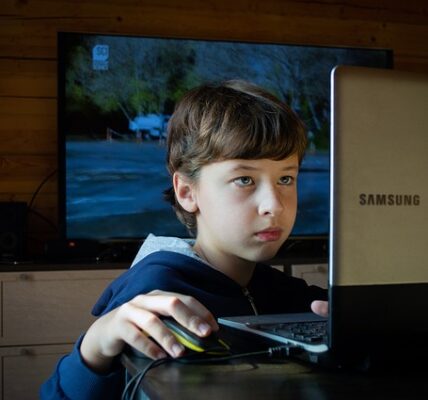Managing Digital Stress and Anxiety in Children
In today’s digital age, children are exposed to a constant stream of information, entertainment, and social media. While technology can be a valuable tool for learning and connection, excessive screen time and online activity can also have negative effects on children’s mental health.
Digital stress and anxiety in children is a growing concern for parents, educators, and healthcare professionals. Children are increasingly using devices to cope with emotions, socialize, and access information. However, this can lead to feelings of overwhelm, loneliness, and decreased attention span.
As a parent or caregiver, it’s essential to recognize the signs of digital stress and anxiety in children and take steps to mitigate its effects. In this article, we’ll explore strategies for managing digital stress and anxiety in children, from setting limits on screen time to promoting healthy online habits.
Step 1: Set Limits on Screen Time
Establishing a daily limit on screen time is crucial for reducing digital stress and anxiety in children. Set a specific amount of time each day that your child can spend on devices, and stick to it. Consider using parental controls or apps that track screen time and provide alerts when limits are exceeded.
Encourage physical activity, outdoor play, and other hobbies that promote social interaction, creativity, and relaxation. This will help children develop a healthy balance between digital and non-digital activities.
Step 2: Monitor Online Activity
Monitor your child’s online activity to identify potential sources of stress and anxiety. Look for signs such as:
- Excessive social media use
- Online arguments or cyberbullying
- Sentimental or self-destructive online behavior
- Excessive video gaming or streaming
Address these issues promptly and have open conversations with your child about their online experiences. Encourage them to report any incidents or concerns to you.
Step 3: Promote Healthy Online Habits
Teach children healthy online habits that promote digital citizenship, creativity, and emotional well-being:
- Encourage critical thinking and media literacy
- Model respectful online behavior yourself
- Discuss the importance of privacy, safety, and security online
- Foster a growth mindset and encourage exploration and creativity
Step 4: Encourage Digital Detox
Regular digital detoxes can help children disconnect from screens and recharge. Plan regular device-free days or weekends, and engage in activities that promote relaxation and socialization.
- Outdoor activities like hiking, biking, or swimming
- Board games, puzzles, or creative pursuits
- Sporting events, concerts, or other live performances
Step 5: Seek Professional Help When Needed
If your child is experiencing persistent digital stress and anxiety, seek professional help from a mental health expert. They can provide guidance on managing symptoms, developing coping strategies, and improving overall mental well-being.
Awareness about digital stress and anxiety in children and effective strategies to mitigate its effects are essential for promoting healthy relationships between technology use and child wellbeing. By setting limits, monitoring online activity, promoting healthy habits, encouraging digital detoxes, and seeking help when needed, parents and caregivers can support their children’s mental health and well-being.
Digital Stress and Anxiety in Children: Taking Control of Your Child’s Digital Health
Tags:
digital stress and anxiety in children
parenting tips for digital wellness
healthy online habits for kids
managing screen time and anxiety in children
digital detox for kids




